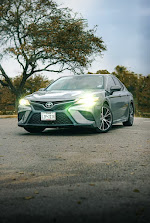Turbo Charger
Hmm , seems the automotive world is gearing up for a new change that would be in effect in the next few years to come and that is the inclusion of turbo chargers in one of every four vehicles manufactured , this would certainly increase the speed and performance of such vehicles but asides this what does this inclusion bring to the automotive world in general, lets get more of this from car and driver.
By now, you know turbochargers are not the failure-prone spinners they were in the 1980s, no longer the bolt-on pieces that pulverized weak engines and their weak parts with surges of intoxicating power. Today, nearly one in every four new vehicles sold in North America comes with at least one turbo, if not two. Enough of our favorite engines have succumbed to pressurized, exhaust-driven induction—Mercedes’ AMG V-8s, BMW’s inline-sixes, and, most recently, the Porsche flat-six—that there’s no turning back. They’re
efficient, reliable, and getting better—and cheaper.
efficient, reliable, and getting better—and cheaper.
Within five years, nearly half the world’s new light-duty vehicle sales will be turbocharged—some 18 million more than today—with an estimated 39-percent take rate within North America. That’s according to engineers at Honeywell, the world’s preeminent turbo manufacturer, with whom we sat down to talk about what’s coming for the next generation of turbocharged engines.
This answers the question or better still general thought of people that turbo chargers are merely used to boosts the performance of not so enterprising or out rightly weak engines on the the contrary the devices would be incorporated in future car designs to reduce fuel lag , deliver quicker power and improve fuel efficiency.
How does car and driver feel the full incorporation of turbochargers in future vehicles can positively improve fuel efficiency, this is what they had to say .
While smaller turbocharged engines have improved EPA scores, in many of our road tests, we haven’t seen such radical mileage swings compared with naturally aspirated engines. Ford’s EcoBoost 2.7-liter and 3.5-liter V-6 engines, for example, return mileage on par with Chevy’s larger 6.2-liter V-8. Fuel economy in the Cadillac ATS 2.0T and BMW 328i? Nothing to brag about. And it’s not just our heavy-footed driving styles.
“There must be a matching of all systems, so what you produce in the certification exercise translates,” Davies said. “You can validate something on the test bed that fails to convert on the road. This is the challenge of the industry now.”
To sum it all up the introduction of turbochargers in nearly all future light duty vehicles is a welcomed development while its a massive hit Europe and america my thoughts are that for developing regions like the middle east and sub Sahara Africa the need for the inclusion of this device is still beyond the capacity of these regions .
Tags:
Car Talk
